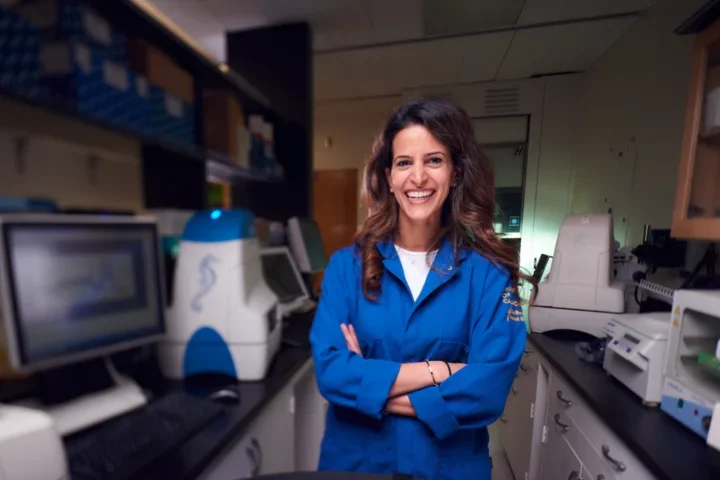What Is Dermatopathology?
Diagnosing Disorders of the Skin

A Day in the Life of Dr. Peter Sarantopoulos, Dermatopathologist
For G. Peter Sarantopoulos, MD, dermatopathology is more than just skin deep. It's about looking at little bits and pieces of people. Dr. Sarantopoulos, the director of the Dermatopathology Fellowship and associate professor in the Department of Pathology and Laboratory Medicine at the David Geffen School of Medicine at UCLA, says he loves his job.
"I see an amazing array of skin pathology cases on a daily basis," he says.
But what attracted Dr. Sarantopoulos to the field? And what is dermatopathology?
When Opportunity Knocks

Dermatopathology is the study of skin pathology and a subspecialty of dermatology and pathology. "In order to become a dermatopathologist, you first have to become a pathologist, specifically an anatomical pathologist," Dr. Sarantopoulos explains.
When Dr. Sarantopoulos was a medical student at the University of Arizona in Tucson, he wanted to become a primary care doctor and have a family practice, "but an opportunity arose at the end of my second year for me to be a post-sophomore fellow in pathology."
"The chance to act as a pathology resident as a medical student was huge," Dr. Sarantopoulos says. "Pathology is vital to every area of medicine, so I thought that this additional training would be a good foundation for me. What I found when I actually practiced pathology was that I really liked the people and the study of pathology."
Although it was a departure from clinical medicine, Dr. Sarantopoulos was still interacting with clinicians and making daily diagnoses on a wide range of cases. Eventually, as he headed toward his fourth-year clerkship, he decided he wanted to pursue pathology as his career in medicine. His pathology residency brought him to UCLA.
"I really liked the program at UCLA," Dr. Sarantopoulos says. "The faculty were laid back and interesting but very intense in their work. It seemed like a good fit for me, so I began training as an anatomic pathologist."
Anatomic pathology is the study of organ pathology, either inflammatory or tumor pathology in all the various organs of the body. Although unsure which organ system he found most interesting, the arrival of Scott Binder, MD, Chief of Dermatopathology at UCLA, inspired him to seek training as a dermatopathologist.
"He was a great teacher, and I thought, 'Wow, skin pathology is really cool.'"
What Is Dermatopathology vs. Dermatology?
A medical student must be trained in either dermatology or pathology to become a dermatopathologist. Dermatologists treat the patients, while dermatopathologists receive the biopsy specimens, look at the tissue and make the diagnoses.
"We work very closely with dermatologists. The patient will have a rash or a skin lesion and the dermatologist will perform a biopsy and send the tissue to pathology for processing. I then examine the tissue under the microscope and render a diagnosis," explains Dr. Sarantopoulos.
(What Does a Dermatologist Do? Click the link to learn more...)
'What I Love About My Job'
Dr. Sarantopoulos sees a range of cases, from the more routine—for example, warts—to highly complex cancer cases sent to UCLA from other pathologists seeking a second expert opinion.
"What I love about my work is that I am always engaged, always thinking," Dr. Sarantopoulos says. "When I was in medical school, I didn't even think to ask, 'What is dermatopathology?' I think more and more people are realizing it's an interesting and satisfying pursuit."



